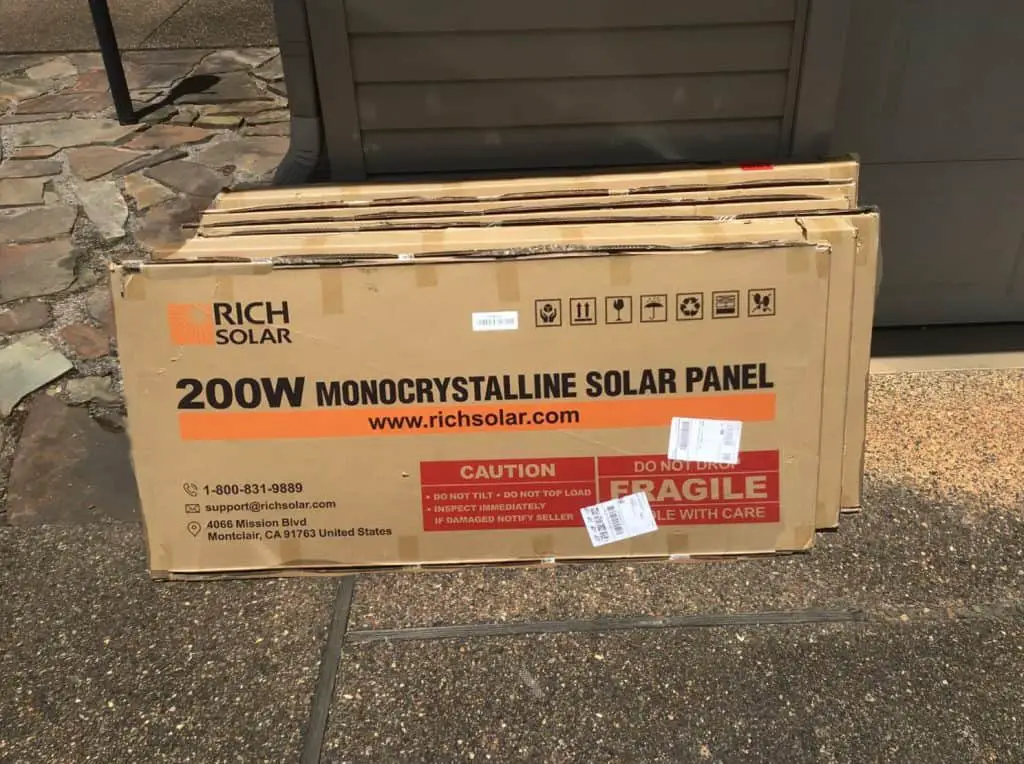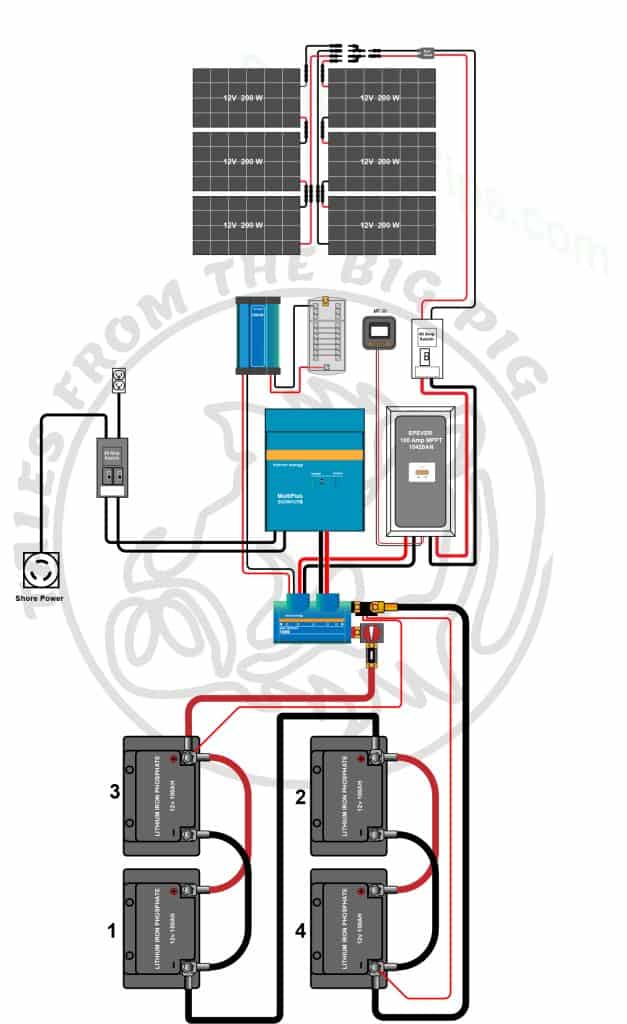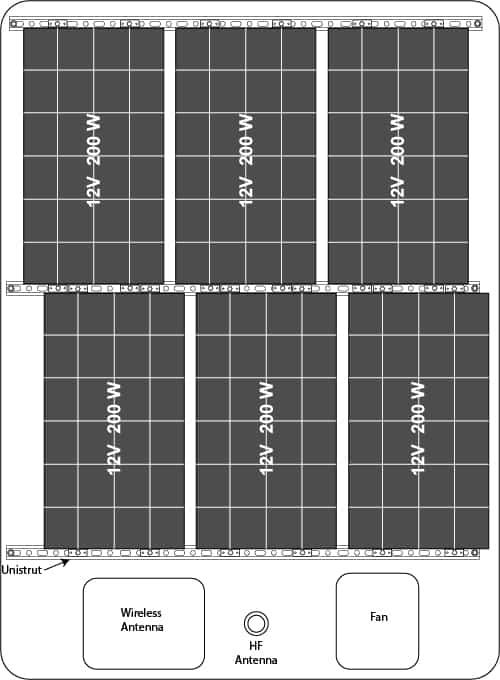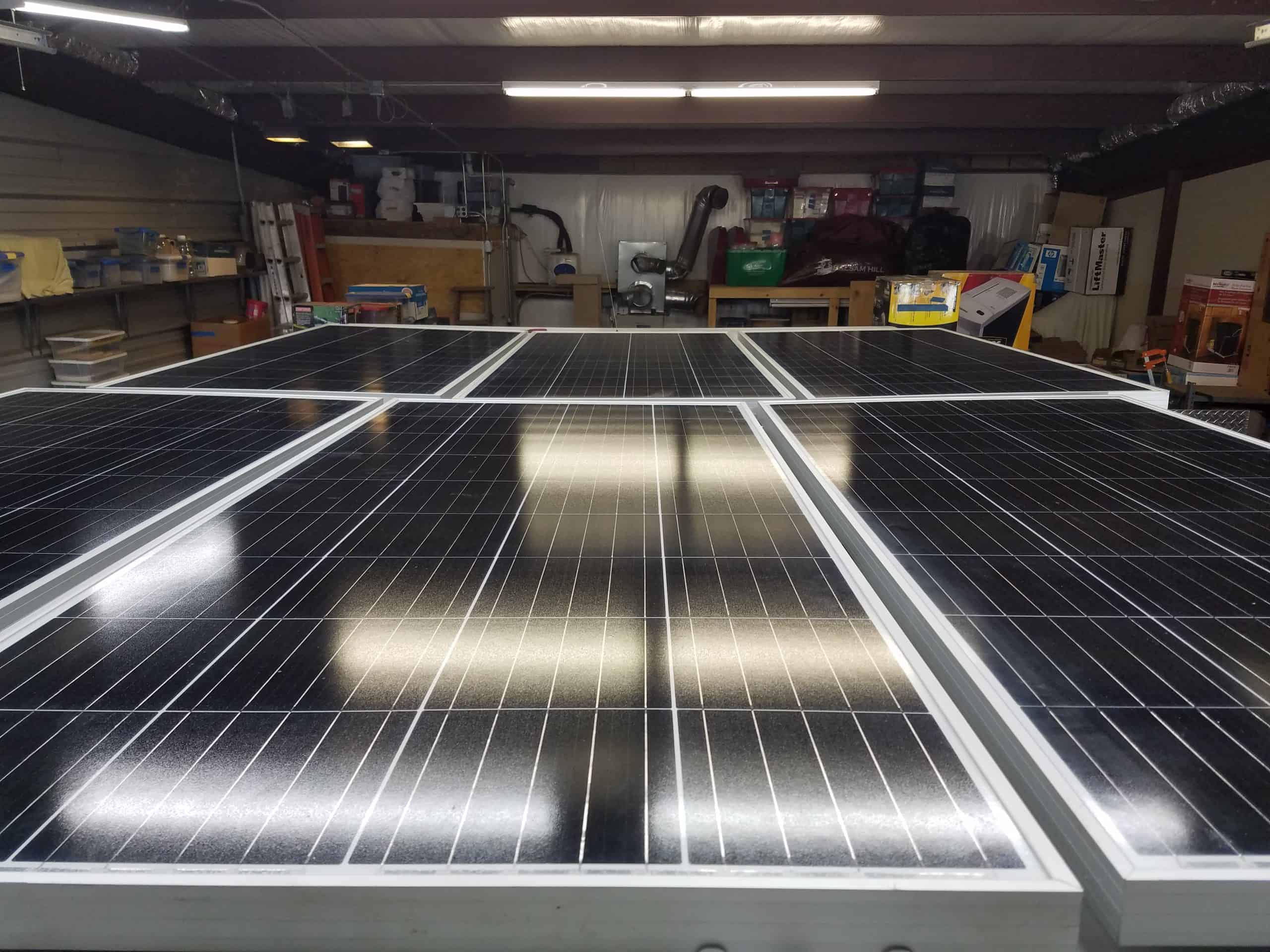Okay, I admit it. I screwed up.
I was so excited about getting the ambulance and converting it to an RV that I did things in the wrong order. I ordered the electrical components before I even started the demo. It turns out that wasn’t such a bad thing but I would certainly have done it differently and planned a little more carefully were I to do it again. So, putting solar panels on an ambulance RV requires a little design work in advance.
What I did do was order a 24-volt Victron inverter accidentally instead of the 12-volt I had planned on. Now, it’s okay because 24-volt systems have advantages over 12-volt systems, but all the wiring estimates I made were for a 12-volt system, which is considerably larger-gauge wires.
This post may contain affiliate links or mention our own products, please check out our disclosure policy here.
I made the jumper cables to go between the batteries and set up two 12-volt 100ah batteries in parallel with two12-volt 100ah in parallel and put the two banks in series.
I also went on the cheap and bought an off-brand lithium-ion battery with a plan to add extras later… but I did not anticipate that they would no longer be available. It’s a hard fact that you shouldn’t or can’t mix battery types or brands-they should all be the same make and model.
There’s also the fact that I followed someone else’s diagram. I bought the less expensive Epever MPPT instead of the matching unit from the same manufacturer as the inverter-Victron. There have been some compatibility issues.
Last, I ordered six 200-watt 12-volt rigid solar panels for approximately $1 per watt. Six solar panels take up a LOT of real estate on the roof of my ambulance. I might have been better served by going with four 390-watt panels, for instance. Additional panels are not an option since I used up all my roof space.
Everything considered I’m very pleased with the way the system works now. I had to learn that there were some parts and pieces that I assumed would come with the original components that I ordered, that didn’t, like the mounting tabs for the panels or the ethernet to USB dongle you need to program the Victron inverter. These were extra charges that I was not expecting when I wrote up my budget.
Hopefully, you will learn from my mistakes and not get surprised by any of these obstacles.
In this article, I will discuss how I installed the solar panels on my ambulance RV. I will also talk about the pros of having a solar panel system installed in your vehicle.
This Is My Experience Only
When we bought our ambulance, we had no idea what we wanted out of a solar system. We knew we wanted to be able to go off-grid, but beyond that, there wasn’t much planning involved. We finally got around to doing some research and came up with a plan.
We’re still learning along the way, but here’s my experience so far…
Our current setup consists of six panels on the roof, a battery bank of six lithium iron phosphate batteries in a parallel and series configuration (see the illustration), a Victron MultiPlus 3000 inverter, and an Epever MPPT controller. Fuses, switches, breakers, etc. are shown in the drawing and will be itemized at the end.

What Are RV Solar Panels?
Solar panels can be rigid or flexible, Monocrystalline or Polycrystalline panels, and can be mounted on top of your roof or the side of your vehicle. They are basically small solar power generators. A solar panel generates DC (direct current) electricity from sunlight. Batteries can then be used to store this DC electricity.
- The amount of sunlight received
- Solar panel size
- The efficiency of the solar panel
The Pros Of Having Solar Power On Your RV
- Costs less than running propane or diesel fuel
- No noise pollution
- Less expensive than running gasoline
- You don’t have to worry about fluctuating gas prices
- It saves money over time
- If you park in sunny areas, you may never use your generator again
How Do Solar Systems Work?
Our sun has a temperature of around seven million degrees Fahrenheit and is constantly emitting massive amounts of EMR (energy in the form of electromagnetic radiation). There are multiple types of EMR, and the sun produces all types of EMR, transmitting them to the earth in the form of photons.
Photovoltaic cells convert light energy into electrical energy. They consist of semiconductor materials like silicon, gallium arsenide, cadmium telluride, etc. These materials absorb photons and generate electrons when they are struck by photons.
Wires carry the generated voltage to the charge controller which charges the battery bank. The battery bank can consist of Lead-Acid, Sealed AGM gel, or Lithium Batteries. You cannot use different types of batteries to build the battery bank.
If the battery bank is a 12-volt system, then all of the ambulance’s 12-volt components can operate directly from the battery bank. if your battery system is 24 volts, it must first go through a dc-to-dc converter, taking it from 24 volts down to 12 volts.
The battery bank also provides power to the inverter, which converts the 12/24 volts to 120-volt ac to run regular household appliances (such as a coffee maker).
Please note: The electrical components such as lights, tv, fans, etc. do NOT run off the solar panels…they are powered by the battery bank which is in turn charged by the solar panels.
How To Hook Up Solar Panels on an Ambulance Battery
Simply put:
Step 1 – Run the positive cable and negative cable from the solar panels to a disconnect. You always want to be able to isolate the solar panels from your electrical system and a disconnect is a must.
Step 2 – Run the positive and the negative cables to the solar charge controller. The charge controller can be a maximum power point tracker (MPPT) and pulse width modulation (PWM).
Step 3 – Run the positive and negative cables from the charge controller to a distribution block.
Step 4 – The positive and negative cables run from the distribution block to the inverter and to the batteries in separate runs (see the illustration of my system).
Rather than purchasing a solar panel kit, I assembled mine from individual solar components following a diagram I worked up.

The Epever MPPT Solar Controller comes with its own solar monitor, but I will be selecting additional battery monitors to keep tabs on my solar energy usage hours per day.
How Will You Mount The Panels To The Roof?
I wanted to have as few holes going through the roof of my ambulance as possible, so I devised a way to use Unistrut to hold the solar panels to the RV roof and the two sets of three panels would share the middle Unistrut. This was to keep the number of bolts down to 12 total per Unistrut. I have seen some vloggers that recounted losing panels going down the highway. I believe this is a very solid mount and this solar setup will stay put.

How Many Solar Panels Do I Need To Run An RV?
Based on 5-9 hours of sunshine exposure, a 100-watt solar panel can produce 30 Amp Hours of battery charge. Typically, RV solar panels range from 150 to 200 watts.
- If you have a single 12-volt battery, about 100ah, then you should have at least 300 watts of solar panels.
- Two 12-volt batteries with between 200-250ah, should have at least 400 watts of solar panels.
- If you have four 12-volt batteries with between 400-600ah, you should have 600 watts of solar panels, minimum.
The more batteries the better. If you can get a battery bank that is rated at 1000ah or higher, even better.
If you are running an air conditioner, you will need to find the highest SEER rating (20.5 – 28) for your unit to keep the drain on the available battery storage to a minimum.
Can You Run An RV Completely On Solar Power?
The short answer is: No, not if you’re cheap. The long answer is yes, you can, if you spend enough money on the components. I overspent on mine but did it a little at a time. I put 1400 watts of solar on the roof and planned to see how long I could run off the grid. With enough batteries and enough solar power, you could make it through while boondocking. Just watch out for the shade… Oh, and those snowy and rainy days.
Is It Worth It Adding Solar To An RV?
Absolutely. A solar panel installation allows you to camp anywhere you want, which is one of the biggest benefits. There is nothing wrong with an RV park and the electrical hookups that come with them, but sometimes people want to go off the grid.
You can certainly use a gas-powered generator to power your appliances, but you run the risk of making people around you annoyed by a noisy piece of equipment. You also won’t need to keep extra gallons of gas in order to power the generator.
In Conclusion
In all my years I have never had so much fun as trying to assemble a neat, compact, survival utility vehicle (yes I’m kind of a prepper). You get to customize your vehicle, your way, with only the things that you need to be happy. Quite frankly, every time you look at it, you’ll smile. You get to make it uniquely yours. Your own particular style and personality will come through, whether it’s through reclaimed barn wood on the walls or the hammered tin ceiling.
Below, I have listed the major components I purchased so you will get an idea of what
it costs to build your own dream. Happy hunting!!


